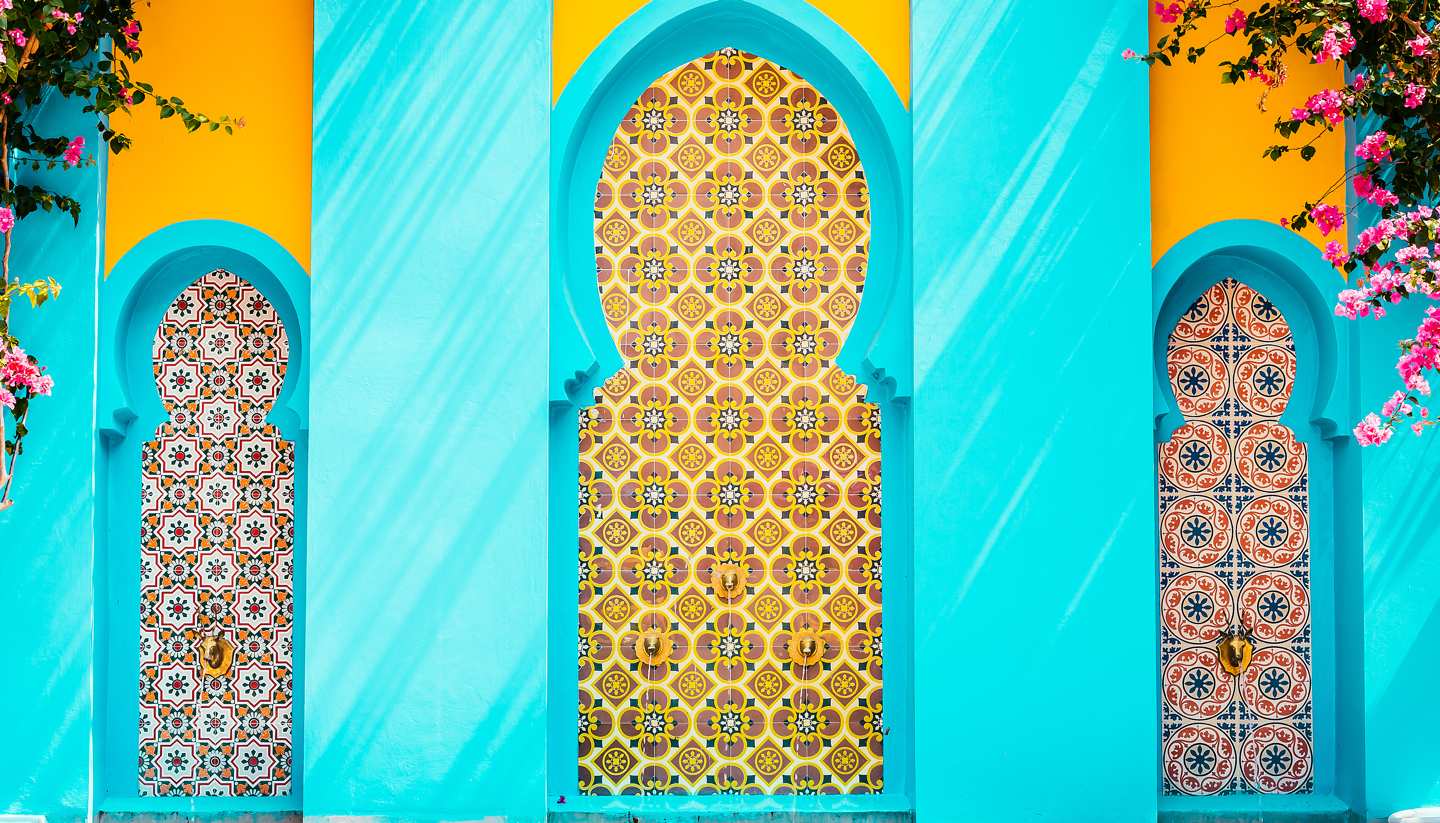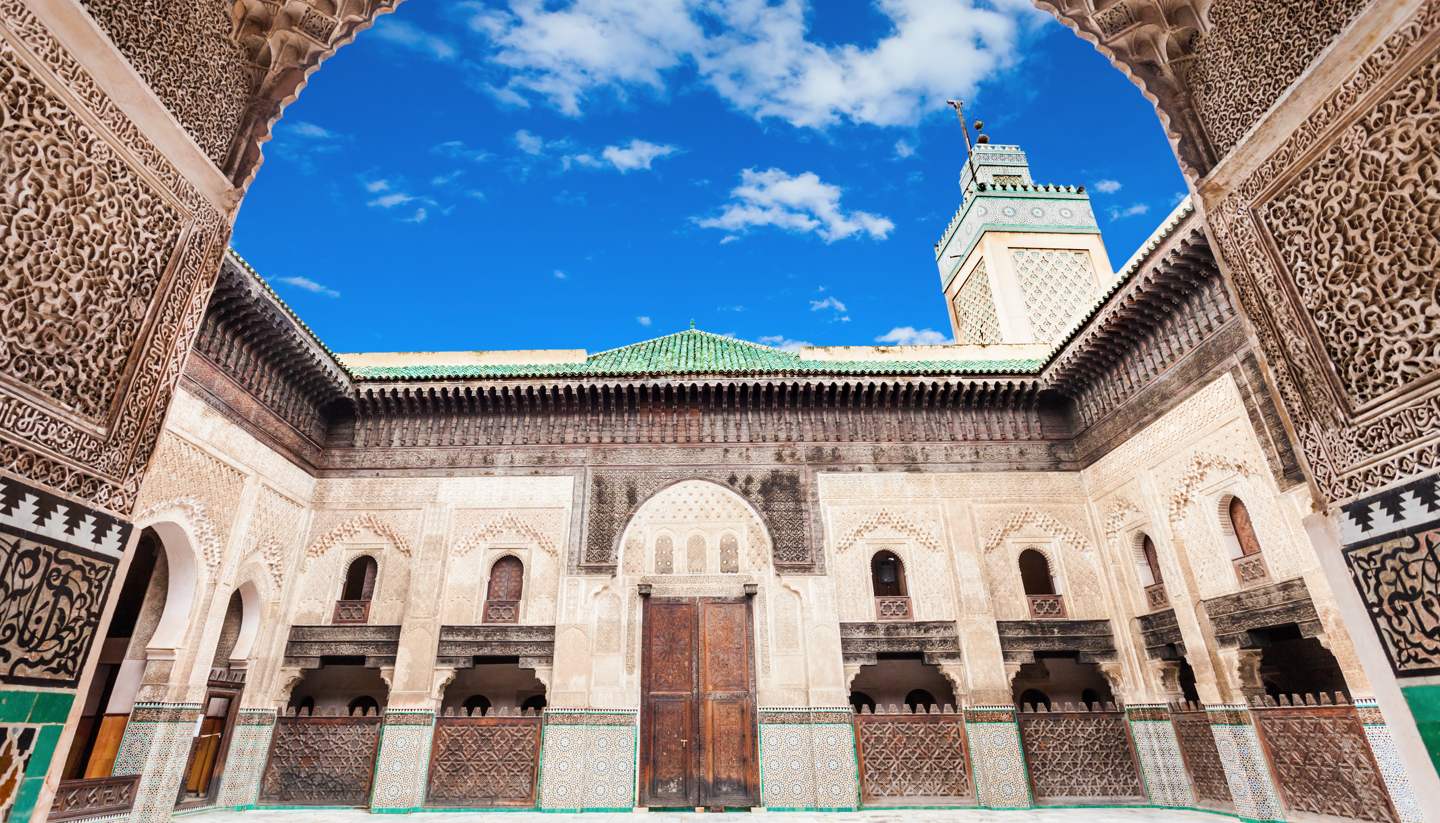Morocco Food and Drink
Morocco cuisine has a unique blend of Berber, Arab, African, Spanish and French influences. Meals range from a diffa, an elaborate multicourse feast featuring spiced salads, couscous and tagines, to quick brochettes (meat skewers) from roadside stalls. Produce is seasonally and locally grown.
Tagines, fragrant stews of meat, vegetables or fish, are named after the distinctive conical earthenware vessel they're cooked in, and are a Moroccan main staple. Flavours revolve around a subtle array of spices, and almost every family has their own secret recipe.
Moroccans drink a copious amount of mint tea (the national drink) which is made with high-caffeine gunpowder green tea, sugar, and fresh mint. Freshly-squeezed orange juice is also popular.
Specialities
• Harira, spicy tomato and lentil soup.
• Pastilla, a type of savoury pie, usually chicken wrapped in filo pastry.
• Couscous, steamed semolina, often served with a stew.
• Tajine, a rich, fragrant stew, can be meat or vegetarian.
• Méchoui, slow-roasted lamb.
• Smen, fermented butter.
• Khliî, preserved meat.
Things to know
Non-Muslim visitors are allowed to drink alcohol at bars and restaurants (if they serve them) but not in public. Locally produced beers and wines are cheaper than imported alcoholic beverages.
Tipping
In high-end restaurants, a service charge is usually included. Tipping is expected if no service charge is added. Most people round up the bill or leave a few dirhams. For example, if the meal costs 33 dirhams, it is polite to give 40 dirhams.
Drinking age
18 (Non-Muslim visitors).



